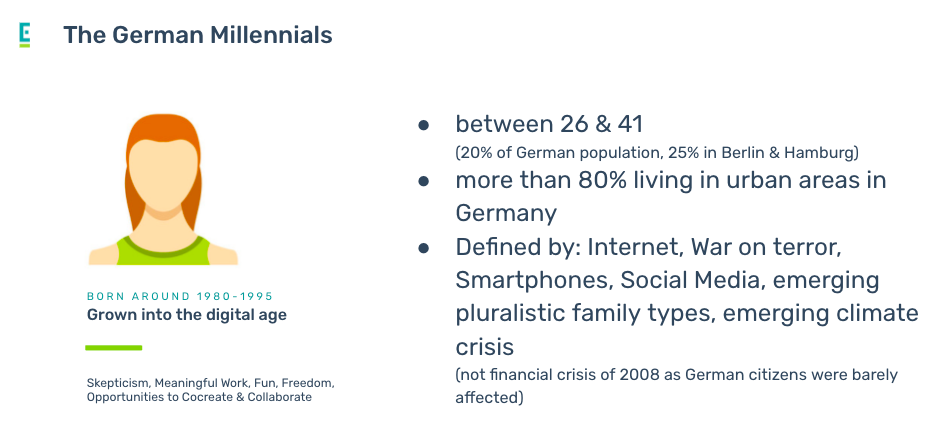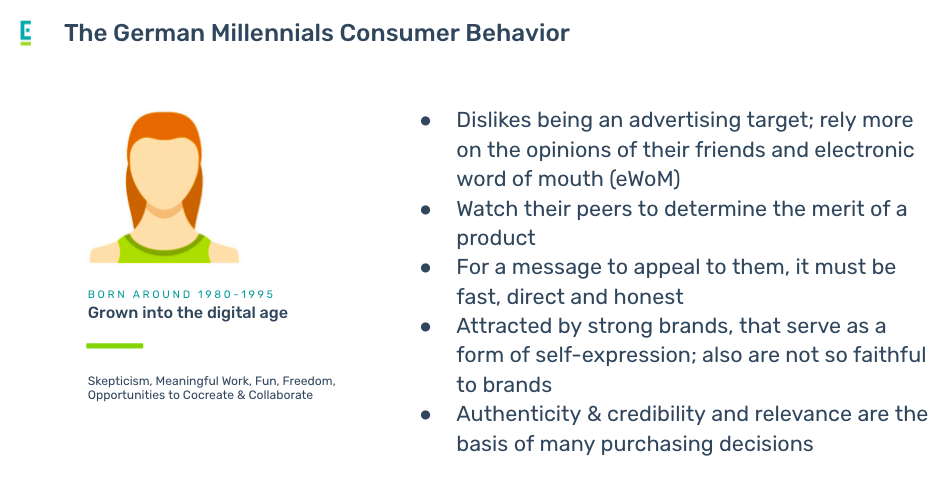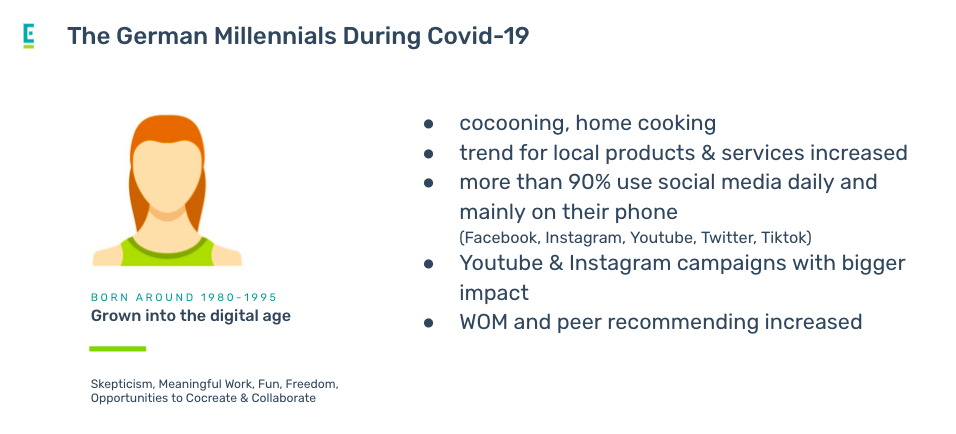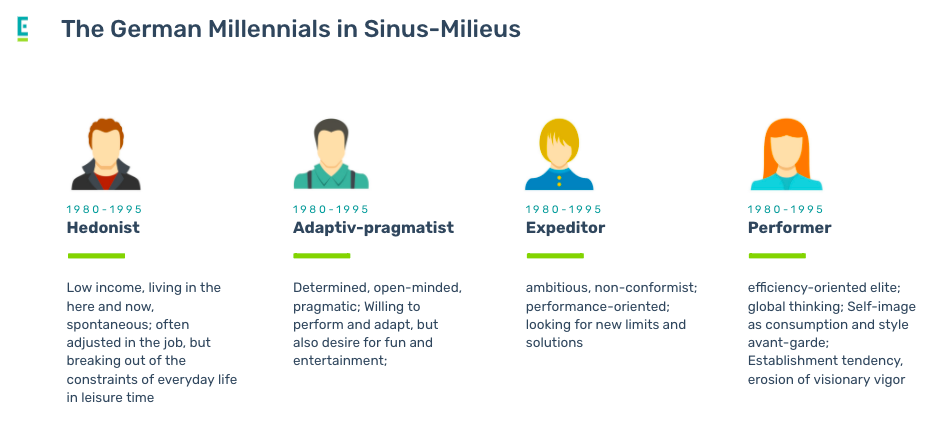What’s the article about:
Ever heard of Word of Mouth Marketing? In our opinion, it is one of the most effective ways to start your endeavours of brand awareness in the German market. In this article we touch upon the German millennials, what describes them and how that leads to a marketing strategy for the German market. Further we explain what the WOM effect can do for your business.
Have a coffee or glass of water during this 5 minutes read.
At Expansion.eco we believe that conscious consumer goods should be available to the vast majority of consumers. It is our vision that in the near future purpose- and impact driven brands dominate the market.
We often see brands and organizations considering the question why they should expand to Germany. The answer is clear. It is a big country with a healthy GDP and especially in terms of sustainability the German consumer can be considered an early adopter.
It is our role to inspire brands to look the other way around: why is the German consumer in need of your product? This question often leads to another question, which is: who is your ideal customer actually and how does it look like in Germany? Are they the same or do they have striking differences that need to be considered before taking the leap to enter the German market?
And once you have your answers there, a customer centric approach is what matters. In this article we focus on the German millenial and how impact brands can use that information to form their marketing strategy for Germany.




How to understand your target group, i.e. the German Millennial
In our most recent blog, 3 Steps To Fail Faster During Your Market Entry By Analysing Your Target Group, we shed light on how to get closer to your target group and which research methods we suggest. If done correctly, a target group analysis enables you to set up tests and MVPs for the market entry faster and more effectively.
As soon as you know who to target on the fun part can begin: developing a fitting marketing strategy that you can execute against your goals. Needless to say that the realm of marketing strategies is endless and always dependent on available resources.
Our clients, purpose driven companies, not only care about profits but also about the people and the environment they affect with their business. These companies face a greater challenge than conventional businesses because the product needs to sustain an organization as well as the mission behind it. When talking in numbers and business calculations as we know them, nine times out of 10, the interests of profit conflict with the interests of people and planet.
One option is to level up compound impact skills. There are two key factors for a successful compound impact strategy: the project (or actions) you invest in and the duration of the project.
Rigorously focusing on important actions, however small, leads to a second and third level of effects in the long run. In the best case, these effects will lead you to reach your goal faster.
Let´s take a look at Word of Mouth Marketing and what it can do for you.
The Word of Mouth Effect (WOM) and Community Building
To achieve a successful market entry with constant repurchases it’s important to build a strong community connection with the consumer – not only with weak ties via social, but also with strong ties via an own community, that can be activated as D2C (direct to consumer) customers and as an own marketing force. WOM as part of an integrated collaborative marketing approach can solve this.
WOM is short for Word of Mouth and has many names: Word of Mouth, Buzz Marketing, Referral Marketing. Crucially, word of mouth is the oldest form of marketing known to man.
The relevance of these conversations for marketing is high: people like to talk extensively about brands. Around half of our daily conversations are brand or product related in some way. In the US alone, about 2 billion “brand related conversations” take place every day. 90% of these word-of-mouth conversations are still conducted offline, only 10% online – but thanks to social media and mobile, the trend is on the rise. Nevertheless, personal dialogue is still our favourite way of expressing our personality through our own stories about our private product experiences.
All these conversations, ratings, customer reviews, product experiences now have a decisive influence on the moment before a consumer makes a purchase decision, before he or she reaches for the shelf in the supermarket. Because the classic buying process from advertising to the supermarket shelf to the post-purchase phase has changed: Advertising still makes people curious, but most only buy when they hear from others that a product works. We all know this moment: when we hear about a new product, we usually Google it and read consumer reviews first before deciding to buy.
This moment is called the Zero Moment of Truth by Google and the active evaluation phase by McKinsey:
“According to a McKinsey study from 2009, word of mouth is now the driving factor behind 20-50% of all purchase decisions and in Switzerland, according to the 2011 study by Accelerom and Publimedia, recommendations from friends are already the second most important touchpoint, just behind advice at the POS.”
WOM drives 20-50% of all purchases. There are many sources that support these statements, please get in touch with us for a full overview of the sources we have acquired over time.
So focussing most on your efforts on having others sell your product is the most effective way to achieve brand awareness and build a community without having to put too many financial resources into activating your target group one by one.
But it’s not only WOM, there´s more customers can do for brands. Think of co-creation, social content and consumer insights.
Just a few key facts to round off:
- 89% want to help companies improve their offerings for the market.
- 25% puts “involving customers to improve products and services” in the top three ways a company or brand can give them a “WOW” feeling.
- 9 out of 10 consumers view brands more positively when they involve customers in product development.
From here on there are three options you can focus on
- You are considering your German market entry and not sure how to go about it? Schedule an informative call with our team.
- In our masterclass about Target Groups and developing marketing strategies we unriddle other approaches to customer centric market entry to the German market. We customize our master classes to your needs.
- Convinced that the WOM-Approach is the right way to go? Let’s do it! Together with our partner, Mr. WOM, we tailor a workshop for your brand and team so you can execute an own strategy for your German Market Entry.
And if you’re just curious how the story continues, stay tuned for our next post or simply subscribe to our newsletter to read it first.
